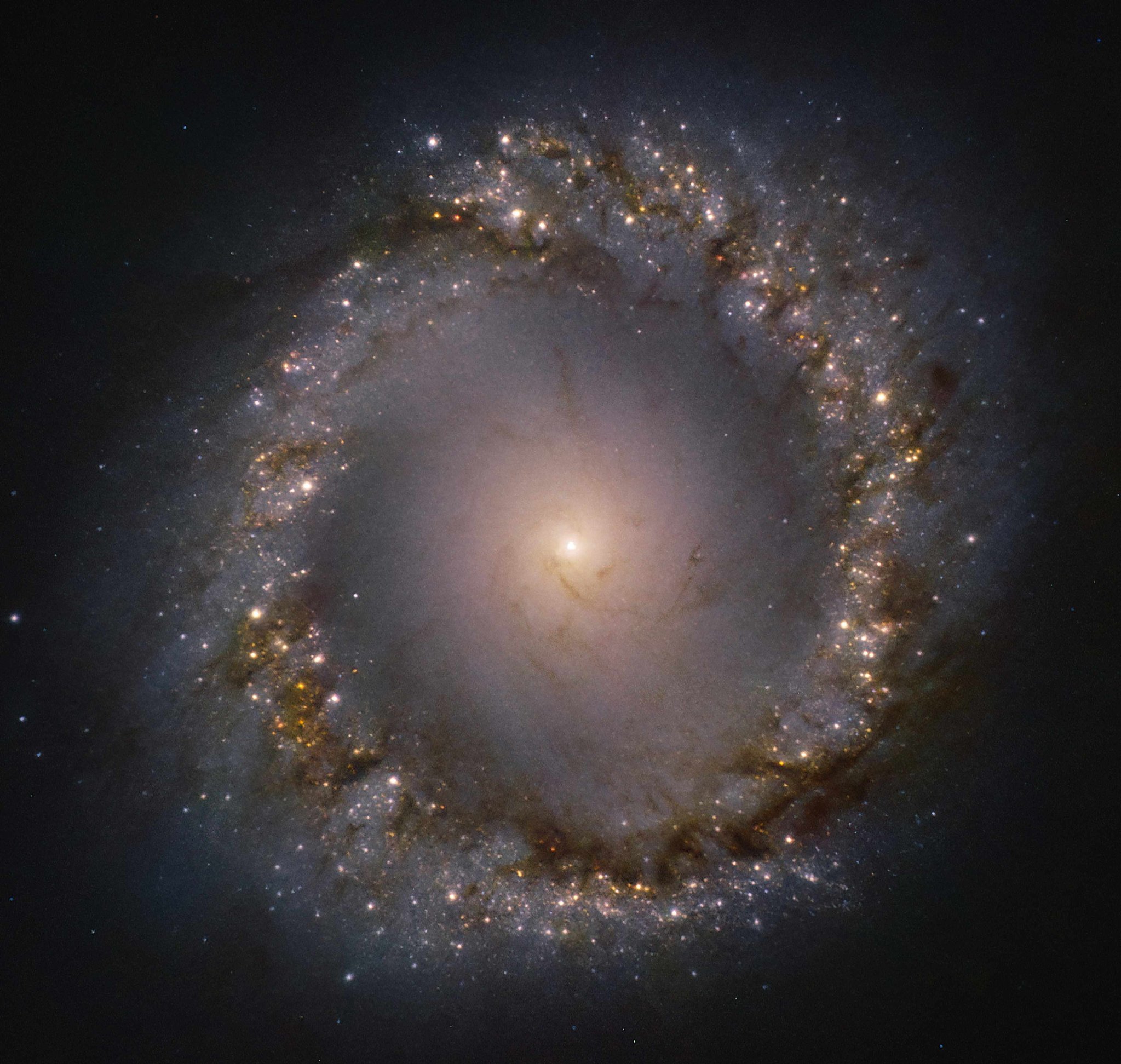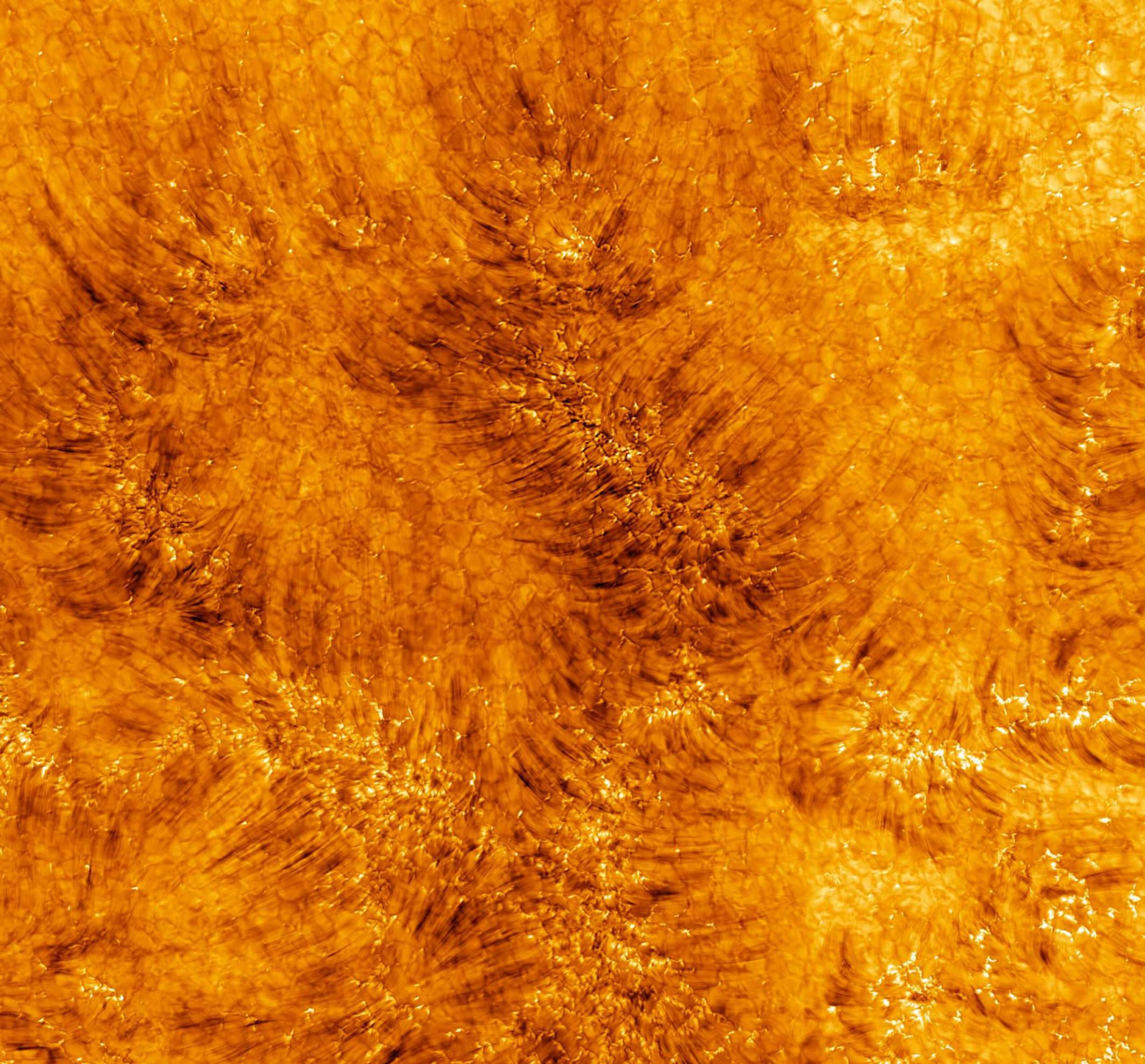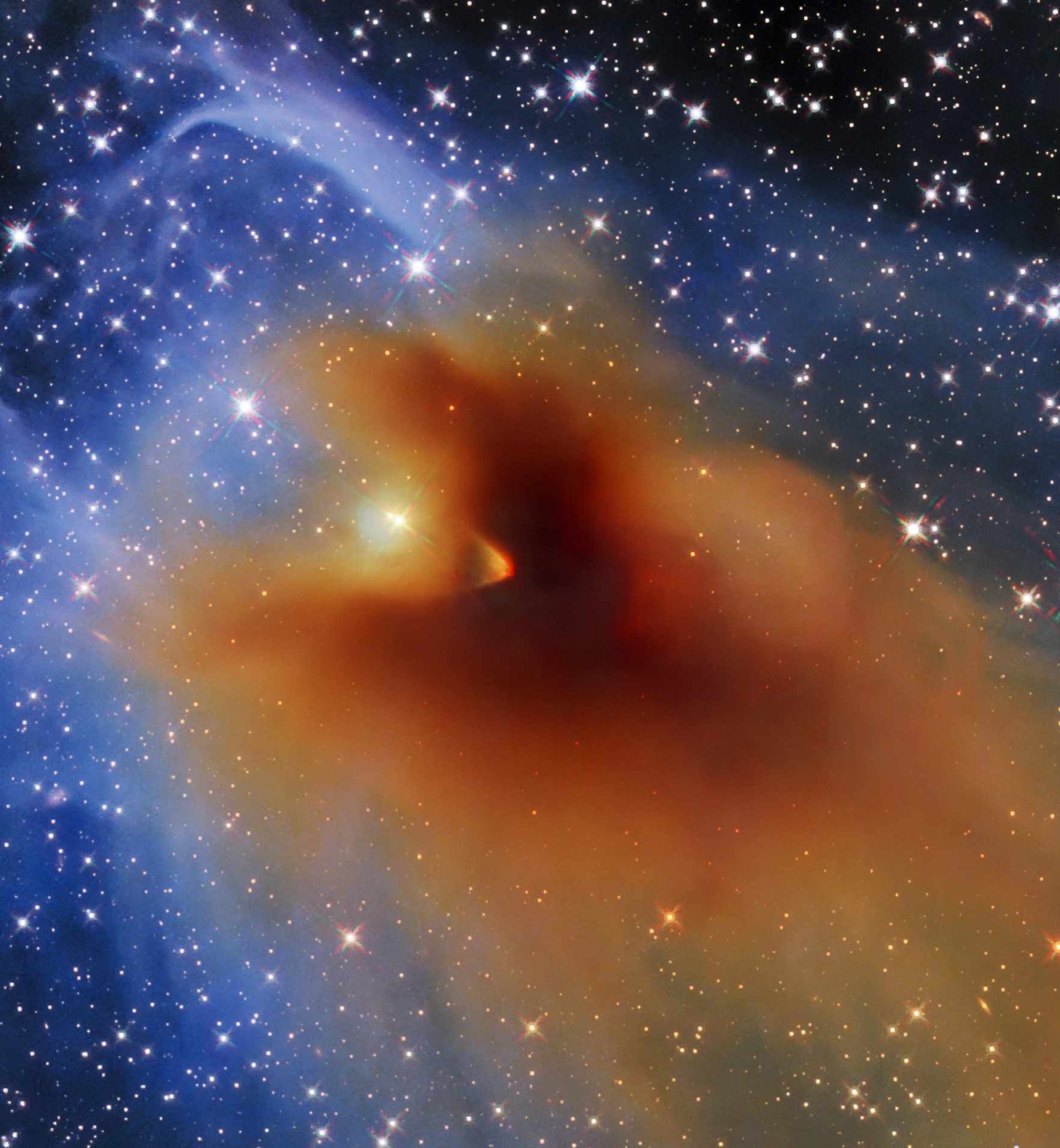EYE ON THE SKY
Star ring role
Towards the centre of a spiral galaxy, a ring of stars circles a black hole

VERY LARGE TELESCOPE, 23 NOVEMBER 2022
Galaxy NGC 1097, in the southern constellation of Fornax, the Furnace, doesn’t have a common nickname like some other galaxies, but this rather beautiful barred spiral takes on a different character when you zoom in on its centre, as the ERIS (Enhanced Resolution Imager and Spectrograph) infrared camera at the VLT (Very Large Telescope) in Chile did to take its inaugural image.
From a distance of 45 million lightyears, we can see an active galaxy with a quasar-like core, which is also interacting with a companion. Three supernovae have also been observed in the galaxy since 1992. The ring of bright star-forming regions that has formed around the supermassive black hole at its centre is sending gas and dust inwards. The motion of this material causes new stars to form in the ring, which is 5,000 lightyears across, but takes up a portion of the sky less than 0.03 per cent the size of the full Moon.

Sun spotted
DANIEL KINOUYE SOLAR TELESCOPE, 5 SEPTEMBER 2022
The Sun’s chromosphere, the atmospheric layer above its surface but below the corona, usually appears red due to hydrogen-alpha emissions, but this image uses hydrogen-beta, making it more yellow. It can’t usually be seen due to the Sun’s brightness. The Inouye Telescope is new – this is one of its first images, celebrating its inauguration at Haleakalā Observatory.

The art in space
HUBBLE SPACE TELESCOPE, 13 DECEMBER 2022
Inside the Large Magellanic Cloud lies a supernova remnant known as LMC N49. Its filaments and nebulosity paint the darkness with vivid colours, and it’s thought to be 5,000 years old. It hides a soft gamma-ray repeater, which is probably a neutron star. The data is from the Wide Field and Planetary Camera 2, which was replaced in 2009, with up-to-date processing.

Titan quest
KECK II TELESCOPE, 1 DECEMBER 2022
Saturn’s largest moon, Titan, has clouds in its atmosphere and we can see them. First spotted by the James Webb Space Telescope’s NIRCam, a follow-up observation was made the next day by the NIRC2 camera on the Keck II Telescope, near the summit of Mauna Kea, using adaptive optics. It saw that the clouds, the white areas at the top of the image, had changed shape. Titan is the only known moon with a thick atmosphere, and the clouds are likely made of methane.

Something to hide
HUBBLE SPACE TELESCOPE, 18 NOVEMBER 2022
Behind this glorious orange molecular cloud lurks an object that one day will become a star. CB 130-3 is a dense core, the smallest and densest type of molecular cloud, and it sits in the constellation of Serpens Cauda, the Serpent’s Tail. As the carrot-coloured cloud continues to collapse, its temperatures and densities will reach the threshold for fusion. Hubble’s Wide Field Camera 3 shows the density and colour increasing towards the central area, where the protostar will ignite.
MORE ONLINE
Explore a gallery of these and more stunning space images
www.skyatnightmagazine.com/bonus-content/RRX0AL4